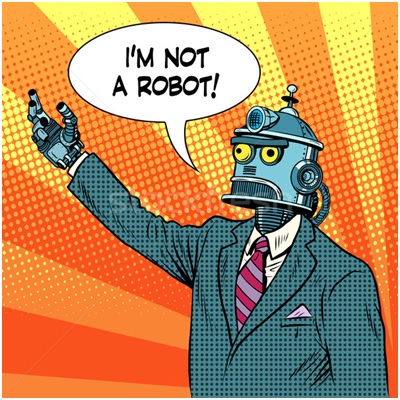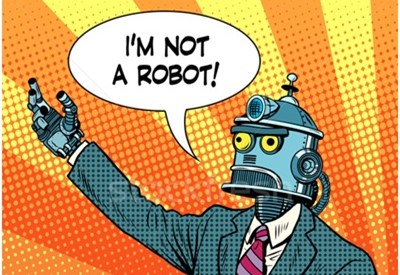How does your leadership education looks like in the next 10 years?
Working with leaders – especially young leaders – I am constantly looking for articles, books that think about, research, predict how the leader of the future will look like. Of course, not necessarily externally. Although there is an article where a robot depicts a leader and it is somewhat frightening me. Externally as well.
I’m more concerned with how to imagine the science of leadership, what skills, abilities and knowledge a leader should have in 10 years if he/she wants to be successful, credible and meanwhile human. In this ongoing search, I came across another gem that I really believe in now. I believe, because it is combined with the thought process in which we think in a holistic way, where the leader, as a whole person-whose body, soul, heart and mind- is based, linked to this, we interpret leadership behavior along his connections.
Maybe you, who reading this writing, are also in search? Are you looking for the direction to go in order to find security in this constantly changing, constantly inventing world? Do you want to be sure that you are able to enter the future with enough flexibility and openness? Exactly to the future that is very likely to be filled with robots? Where does the future require you to operate in completely unimaginable systems without hierarchies? Where is all that we know about leadership, learned, or just applied already useless?
If you’re curious enough, let’s see how Bob Johansen, former head of the Institute for the Future in Silicon Valley, thinks about the new leadership literacy.

According to him, it is worth cultivating ourselves in 5 areas in the next 10 years:
- Learn to look backward from the future!
- Voluntarily engage in fear!
- Embrace shape-shifting organizations!
- Be there even when you’re not there!
- Create and sustain positive energy!
What is the first essential leadership knowledge that, if you master it, if you act accordingly, you will be closer to a successful leadership self in 10 years than you were a moment ago?
I think we should start at the very end of the list, what these fancy sentences mean, and what can we do to really have their education, their culture.
We can certainly agree that you can only create and radiate positive energy in your environment if you are feeling well. So as a leader, when you face the challenge in the near future and there are many young and hopeless co-workers, both online and offline, for whom the key is to be able to give them hope, it’s good to know how to treat yourself well.
It’s not enough to be healthy anymore. There is no time to practice your leadership competencies many times.
Is it surprise after all, if I write the future leader is super-fit?
Super-fit, which means he treats himself well in all areas of well-being. And here, Physical Fitness is just one area.
In order to be able to create and maintain a positive atmosphere as a leader, to give hope to the employees of the future, consider these areas and consider your well-being:
- Physical health
- Psychic, mental
- Social
- Interpersonal
- Spirit
- Workplace
- Financial
Dr. Brad Jacobs has developed an integrative strategy for how leaders manage their well-being. He thinks it is worth focusing on 6 pillars. We start by finding passion and purpose in our work and being able to integrate work and private life. For this and many other areas of life, the ability to be mentally focused and resilient (stress reduction and awareness) is essential. Dr. Jacobs says restorative sleep that is invigorating and adequate enough (min. 7 hours), healthy eating when I know and take responsibility for what I bring into my body, and active living and spending time in nature are also the foundation of our leadership well-being.
And let’s connect! Connection is the 6th pillar. Let’s connect with ourselves, develop our self-knowledge. Connect with others where empathy and transparency guide us.
As you think about your personal relationship to the six pillars, you may want to consider the following questions:
- Calorie intake is adequate for the amount of the energy you use?
- You eat the right type of food?
- How is your relationship with food?
- How’s your posture?
- What types of exercises, movements and activities you do daily?
- How do you feel at the level of vitality in your body??
- Your sleep is restful and sufficient?
- How effectively do you retire after a difficult situation?
- How effectively do you manage a stressful lifestyle?
- Are you able to reach the full potential of your mind?
- How can you connect to yourself?
- How can you connect to others?
- How can you connect to nature?
- Is your passion consistent with your values?
- How much time do you spend on the things you find the most passion for?
We begin with the education to accept the paradigm of the whole person and thus begin to cultivate ourselves as a leader in our entirety. That is, to treat ourselves well — our bodies, souls, minds, and relationships — to be able to treat others well. This is how we can reach the literacy of future leaders that with our presence we will be able to:
create, shape and maintain positive energy!
The next education, we’ll line up with:
“Voluntarily engage in fear! “
Stay with me even then!
Barbara Bite
Bob Johansen: The New Leadership Literacies – Berrett-Koehler Publishers, Inc. (2017)


Leave a Reply